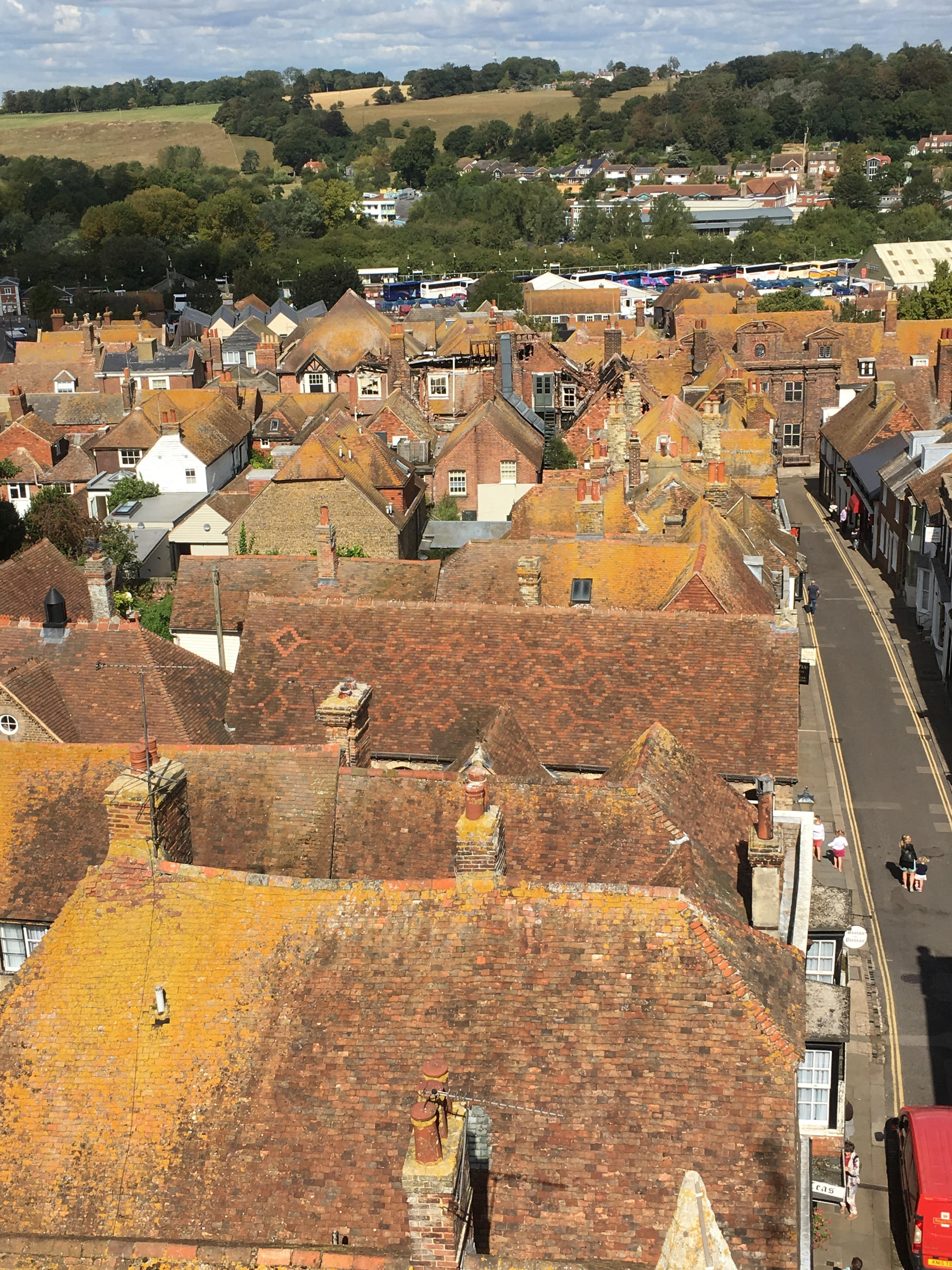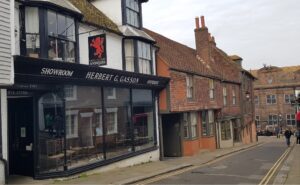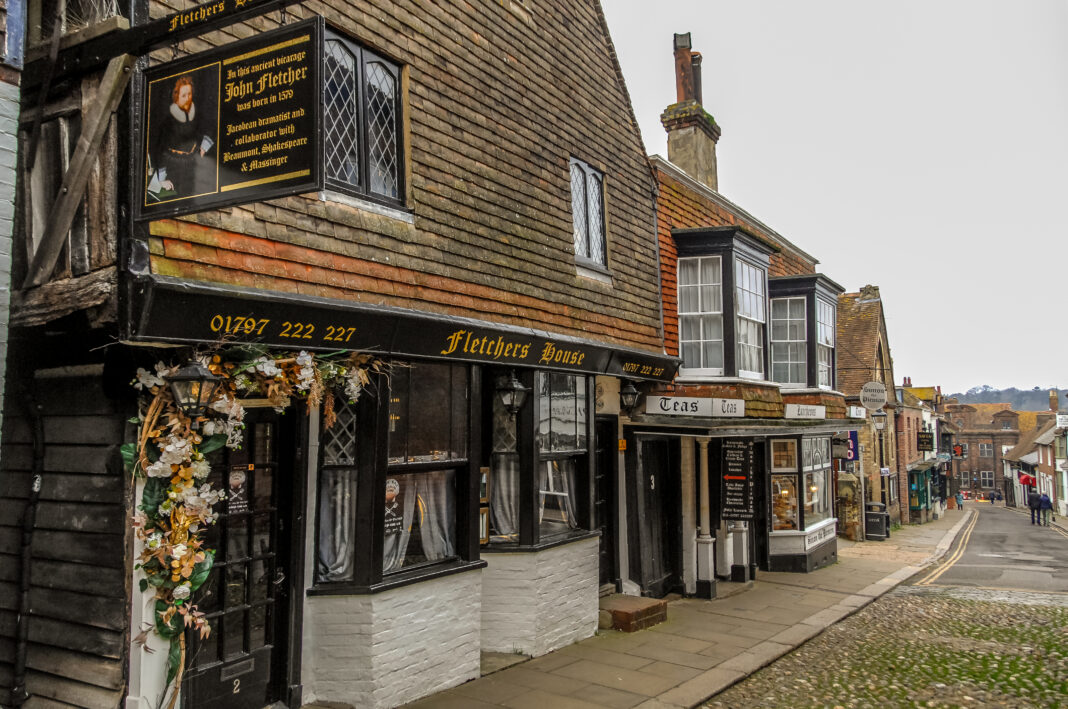Many of the street names in Rye have changed over the years. Some streets, we are told, didn’t even have names until the last century or two. Both East and West Streets were anonymous until perhaps the end of the 18th century. Lion Street was another. It was originally christened Red Lion Street because of its well-known pub.
During the 16th and 17th centuries, a family called Bennett ran a butcher’s shop in what is now Lion Street. The first to be mentioned was Robert, during the 1530s. He was clearly a fairly extreme adherent of the new English Protestant church, which had been formed by King Henry VIII when the pope refused to sanction a divorce from his first wife, Catherine of Aragon. Robert and others made a complaint to the king’s chief minister, Thomas Cromwell, that the vicar of St. Mary’s was still celebrating saints’ days, which had been proscribed under the new religion. Friends of the vicar, who included some of the leading tradesman of the town, then accused Robert and his friends of being heretics. They called for official help to bring the troublemakers to order, describing them as of, “very simple and small substance, rude both in their communication and behaviour”. It was said of Robert that, “he would rather have a dog sing for him than a priest. The man was of a juggler’s making. Our Lady being the mother of God was a sinner in this world as we be.” Cromwell, pushing on with the new faith, and rejecting the tenets of Catholicism, overlooked the low and base nature of the complainants and the vicar was jailed.
During the 1540s and 50s, the population of Rye increased, helped along by improved trade. The Bennett family did well, with Robert buying up four houses in what is now Lion Street. In one of them he carried on his butchery business, complete with a slaughterhouse at the back. This had its own drain, unusual in the town at that date but, with his sort of business, no doubt essential.

Robert Bennett was elected as a jurat of Rye, then a Baron of the Cinque Ports. He was one of those who held the traditional canopy over Queen Elizabeth I when she was anointed at her coronation on January 15 1559.
The next generation were more troublesome than their father had ever been. Robert junior carried on the butchery business while his brother John became a tailor. They were well-known for being regularly involved in drunken brawls. On one occasion Robert was brought up before the jurats, to answer for his part in “a night of ill-rule.” He was, as usual, asked to swear to tell the truth on the bible. He was a staunch Protestant and refused, believing it to be Popish. He instead “promised before Master Mayor and the jurats upon his faith, and swore, laying his hand upon his breast, by the Living God, that he would say the truth, as well as though they should swear him upon a book.” Fine words – but he was still fined eight shillings and six pence.
As the prosperity of Rye declined towards the end of the 16th century, the prosperity of the Bennett family mirrored it. Still, when John died in 1579, perhaps his trade as a tailor had helped him maintain the appearance of prosperity. After he died, the inventory of his possessions included, “a doublet of changeable taffeta, laid with velvet and blue lace, (very fashionable over large breeches,) and black panel hose guarded with velvet.” He must have made quite an impression on the streets of Rye, a walking advertisement for his business.
If declining trade wasn’t enough to contend with, in 1596 Rye suffered an outbreak of the dreaded plague. Robert Bennett, by then heavily in debt, succumbed to its ravages, as is evidenced by the letter P against the entry for his death in the register of St. Mary’s. Shortly after, he was followed to the grave by John, his son.

Lion Street is now free of noisome businesses. It has recently lost that venerable business Henry Gasson, the well-known antique company. One of its customers was that great antique collector Queen Mary, (who contrary to the oft related silly story was not a kleptomaniac. In fact, she was particularly noted for her swift payment of accounts.) There is an interesting reference to James Henry Gasson, towards the end of the 19th century, in a legal notice, describing himself as a furniture dealer, and announcing that he was going to claim compensation for, “the burning of his boat, Providence, lying at the Colt on the bank of the River Rother between the Fishmarket and the railway bridge, by persons riotously assembled on November 5th 1880.” This seems to have been a not unusual occurrence on Guy Fawkes’s Night. The same was reported by a man from Icklesham, who, watching a parade of burning boats suddenly realised that one of them was his!
Image Credits: Chris Lawson , Allan Thomson , Christopher Strangeways .



